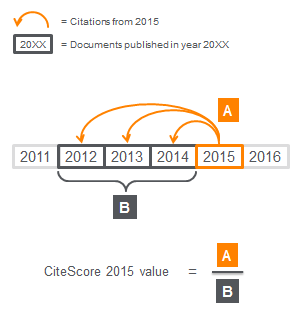
Journal metrics measure the citation rate of a particular journal based on the number of articles published in that journal and the number of citations the journal receives. Like other impact measures it has its limitations and must be considered as one of several factors in evaluating a journal.
The Journal Impact Factor (JIF) is calculated by dividing the number of citations received by the articles of a journal by the total number of articles published in the journal during the two previous calendar years.
Journal Impact Factors can be found in Journal Citation Reports, a subscription-based resource that is available through Western Libraries.
Limitations of Journal Impact Factor:
Eigenfactor measures journal impact based on the number of times journal articles have been cited and which journals they were cited by. Citations from journals with high impact factors will have a greater influence on the score than lesser cited journals. Eigenfactor removes metrics from journal self-citation, making it more difficult for journals to artificially increase their score.
Eigenfactor is calculated in a similar manner to Journal Impact Factor but with higher impact journals being given more weight. A thorough explanation of the calculation method is provided by Eigenfactor.
Limitations of Eigenfactor:
This metric, devised by Elsevier, is similar to the Journal Impact Factor. The primary difference is that all published material in a journal (including editorials, letters and news items) are counted in the calculation.
The CiteScore is calculated by dividing the number of all documents published in a journal during the preceding 3 years (A) by the citations to those documents (B) .

Limitations:
SCImago uses indicators developed by Scopus from 1996 to the present day. It contains indicators such as journal ranking, h-index, and total citations. This is one of the few tools to measure research impact in the arts and humanities. SCImago indexes articles published in more countries and in more languages than most other metric tools.
Limitations of SCImago:
When choosing which journal to publish in there are several other important factors to consider beyond traditional research impact measures. See our Deciding Where to Publish page for more considerations.